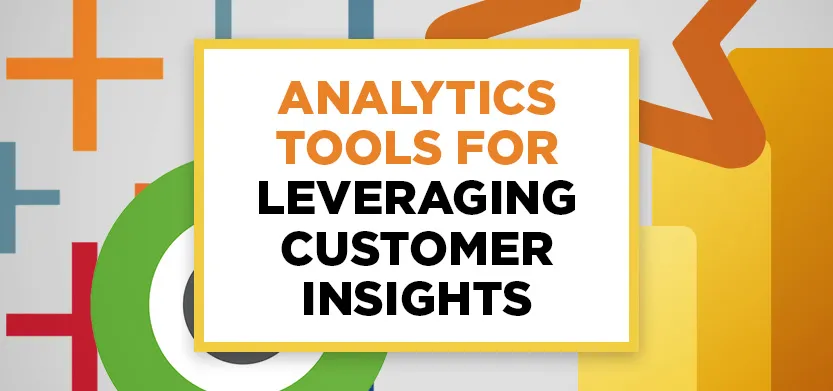4 Best data analytics tools for leveraging customer insights
Today, the only commodity more valuable than oil is data. Especially for the digital economy. Understanding and knowing what to do with data is the difference between a successful business and one that just gets by. The right analytics tools can enable ecommerce companies to understand behaviour and predict future trends by leveraging customer data and succeeding where others fall short.
4 Best data analytics tools for leveraging customer insights
- Tableau — A business intelligence solution known for its cloud capabilities and ability to generate graphical representations of data.
- Apache Spark — Incredibly helpful in executing data science techniques such as classification/segmentation, clustering, regression, and more.
- PowerBI — Leveraging the power of other Microsoft tools, this data visualization tool enables different teams to collaborate and contribute to data projects.
- QlikSense — Combines data visualization with business intelligence to ingest data from multiple external sources, using flexible Connect and API functions.
In the era of digital business, data is the new oil. According to Statista, there will be approximately 2.14 billion digital buyers worldwide in 2021, up from 1.66 billion in 2016. With the increasing number of people shopping online, it has become easier for businesses to analyze data to understand their behaviour and preferences. Such data analytics enable brands to offer relevant products at the right time, resulting in more conversions and enhanced customer experience.
The question is, how do we analyze such massive amounts of data? Many customer data analytics tools are available, but which best suits your business objectives? This article shares the top analytics tools you can use to leverage customer data.
Before discussing customer data analytics tools and their features, it will be helpful to know a little more about the categories these tools fall into. This understanding is the first step in choosing a tool to give you the best customer analytics experience.
Types of customer data analytics tools
Some of the objectives that a customer/predictive analytics tool should fulfill are:
- Customer identity — Identify customer touchpoints.
- Customer segmentation — Group customers based on behaviour, demographics, and psychographics; unify customer data and match customer identities among touchpoints.
- Data visualization — Analyze customer journeys.
- Generate insights — Use churn, revenue, acquisition, customer lifetime value, etc.
- Enable personalization — Find distinctions among multi-channel customers.
Depending on the objective(s) fulfilled by data analytics tools, they can be categorized as follows:
- Customer analytics tools — Segment buyers into groups based on their behaviour and analyze trends to execute personalized marketing campaigns and promotional activities.
- Business intelligence solutions — Transform raw data into insights for better decision-making that improves overall enterprise performance.
- Digital experience platforms (DXP) — Enables the management, delivery, and optimization of contextualized digital experiences.
- Customer data platforms (CDP) — Creates a comprehensive and unified customer database accessible to other systems; helps retargeting and up-selling/cross-selling.
- Customer journey mapping solutions — Demonstrate customers’ relations with the business throughout their lifecycle, highlighting processes, needs, and perceptions.
- Customer journey analytics platforms — Combine quantitative and qualitative data to analyze customer behaviours among touchpoints over time to predict future behaviour.
Popular customer data analytics tools
Here are the most popular data analytics tools for fulfilling specific or multiple objectives.
1. Tableau
For data visualization, Tableau is the first name that comes to the mind of most marketers. It is a business intelligence solution known for its cloud capabilities and ability to generate graphical representations of data. It can handle a massive chunk of data and works perfectly with Big Data tools.
2. Apache Spark
Apache Spark is known for its data mining capabilities. Data science engineers use it daily to generate actionable insights from large chunks of data. It is incredibly helpful in executing data science techniques such as classification/segmentation, clustering, regression (to find the relation between two data sets), and more.
3. PowerBI
PowerBl is a Microsoft-backed data visualization tool. Unlike Tableau, which requires considerable IT support, someone without prior experience creating interactive dashboards can use PowerBI. Leveraging the power of other Microsoft tools enables different teams to collaborate and contribute to data projects.
4. QlikSense
QlikSense combines data visualization with business intelligence and can ingest data from multiple external sources with its flexible Connect and API functions. Thanks to backing from a strong community, it has many online resources to help new users understand it.
So, which data analytics tool is best for you?
Determine which tool is best for you by aligning it with your business objectives. Your main objective may be digging deeper into data to find actionable insights or visualize information on dashboards. You may also want to connect data from different internal and external sources to analyze them on a single comprehensive platform. Explore any of the tools above or chat with one of our ecommerce consultants about more tailored options that suit your business KPIs.


